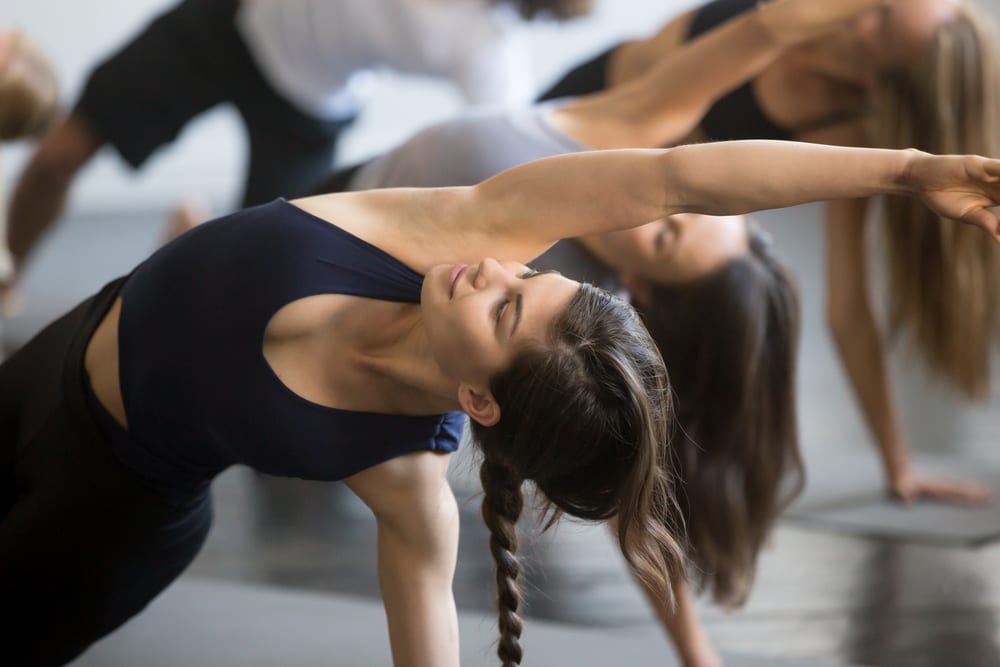The Pilates breath…..the pelvic placement…..the choreography…it can seem like there’s a lot to think about when you first start practicing Pilates. Pilates instructors just don’t stop talking in class (one of the reasons I have the worlds muscliest jaw) and we throw a lot of things at you. It can feel confusing at first but when we break the different Pilates principles down they are really quite simple and they genuinely do become habit.
Let’s start with the breath. It’s the principle that seems to most confuse people and yet it is something we do so naturally when we don’t overthink it. Breathing correctly in Pilates can really help improve your range of movement, encourage you to use the right muscles and help to prevent tension in the body. So, let’s take a closer look.
The Exhale

In Pilates we take the breath in through the nose, and out through the mouth. I prefer to focus on the exhale first here as this is where the most magic happens.
When you exhale try to imagine you are blowing out candles on a birthday cake so there is a little noise and resistance behind each breath. This resistance helps the interplay between the diaphragm and abdominals and helps to activate the core. As a demonstration if you place your hand under your belly button and exhale really loudly you may just feel the abdominals engage. When you exhale you should aim to keep it smooth and consistent and aim to almost completely clear the lungs. That way the inhale will take care of itself.
The Inhale

When you inhale try to take the breath all the way to the base of the lungs. This is an area we often forget, especially when stressed or lazy/shallow breathing, and it will really help with improving gaseous exchange and relaxation. Try to imagine the breath heading to the back and bottom of the ribcage and it therefore opening up like an accordion. Try to keep the tension away from the neck and shoulders and instead use the abdominals to assist the breath.
Breath Plus Movement

In Pilates we try to match the breath to each movement. There are various reasons for this but the 2 reasons I like to describe most are as follows.
- Spinal movement – When you breathe in the chest naturally lifts and the ribs expand. When this happens it causes the spine to extend (straighten). On the flip side when you exhale your ribs close in and your spine naturally folds forwards. Therefore it makes sense to work with that movement. So when you are supposed to fold forward in an exercise we usually exhale to allow that, and when we need to extend our spines we tend to inhale. An example is how we exhale when we come into an abdominal curl.
- Effort – If we imagine a power lifter about to do a very heavy lift. They will tend to exhale on the effort (maybe it’s lifting a barbell overhead) to prevent a build-up of pressure in the body. There are quite a lot of exercises in Pilates (not all) where the exhale is on the effort/the hardest part of the move, therefore I aim for that too.
Are you enjoying this blog on the Pilates breath? If so, and you are interested in learning more about how your body works give my post ‘Lordosis – What Is It and 4 Ways To Treat It’ by clicking HERE
When clients get confused about the order of the breath we have them focus on the movement first, as that’s where the change happens, and then add the breath in when they have the choreography sorted.
The Speed
One thing we notice a lot is clients holding their breath or slowing it down to the point of non-existent. Often, we’re all concentrating so hard on what we are doing that we simply forget to breathe. What we actually want is the movement you are doing to match the speed of the breath, notthe other way around. So, if you are finding that you are having to really slow your breath down to match the exercise, you must speed up the exercise. The better you get at breathing into your lower lungs, the longer you will have to spend on each movement.
Pelvic Floor
There is a fascinating, but potentially lengthy to describe, relationship between the diaphragm, abdominals and pelvic floor. When you breathe, and if you have any headspace left at all, I’d really like you to imagine a gentle contraction of the pelvic floor on your exhales. This assists in activation of the core muscles but also helps to, of course, strengthen the pelvic floor.
Reality
In a perfect world we would take all these points into our next Pilates session BUT…in reality, when you are practicing an advanced and terrifying move such as Tree it just isn’t always feasible to remember it all. So, my main points would be to really focus on a noisy breath (without creating too much tension in the neck or face) and exhaling on the effort/flexion of each exercise. If you can do more than that you’re winning.
*
I hope this helps in broadening your understanding of the Pilates breath. I will be releasing blog posts on a number of different areas to take into consideration within Pilates over the next few months. If you would like to see/learn about anything in particular please do let me know by emailing me at [email protected].

